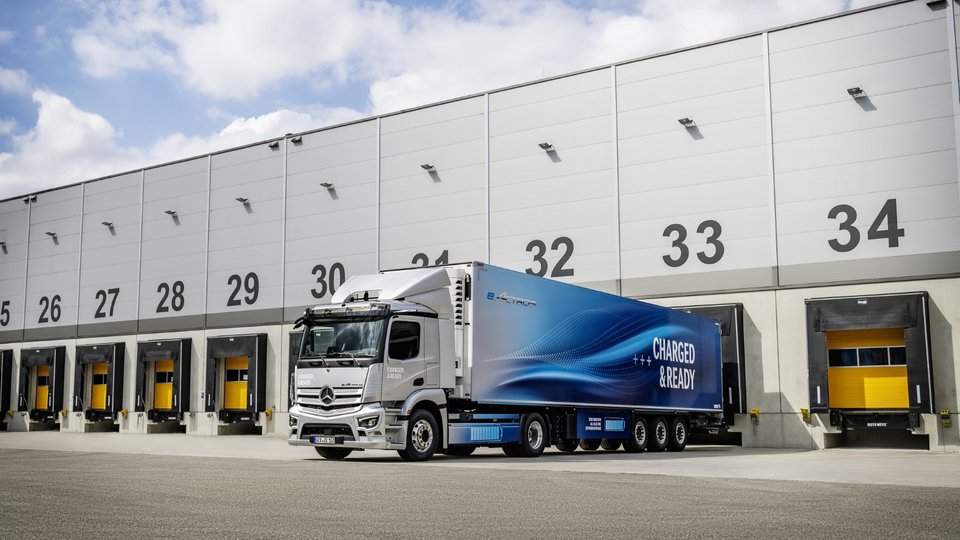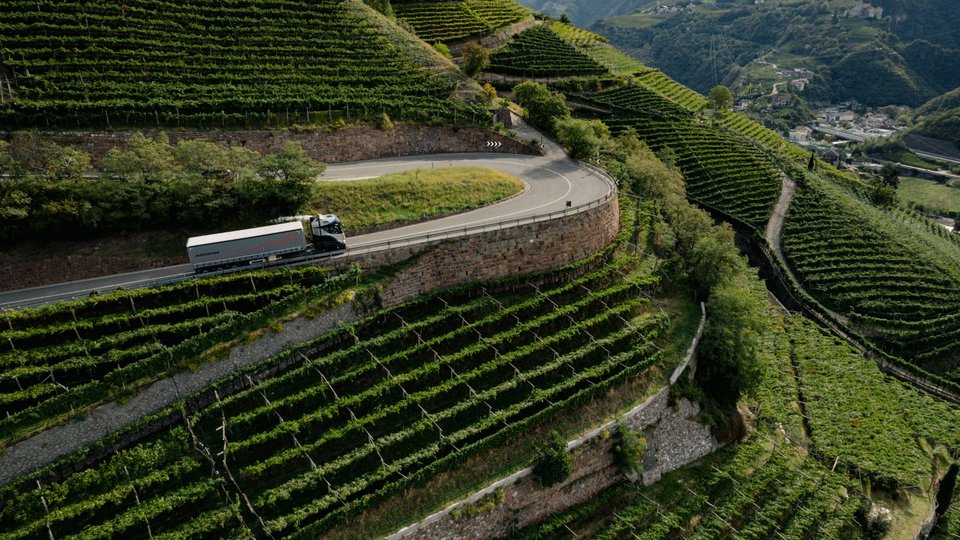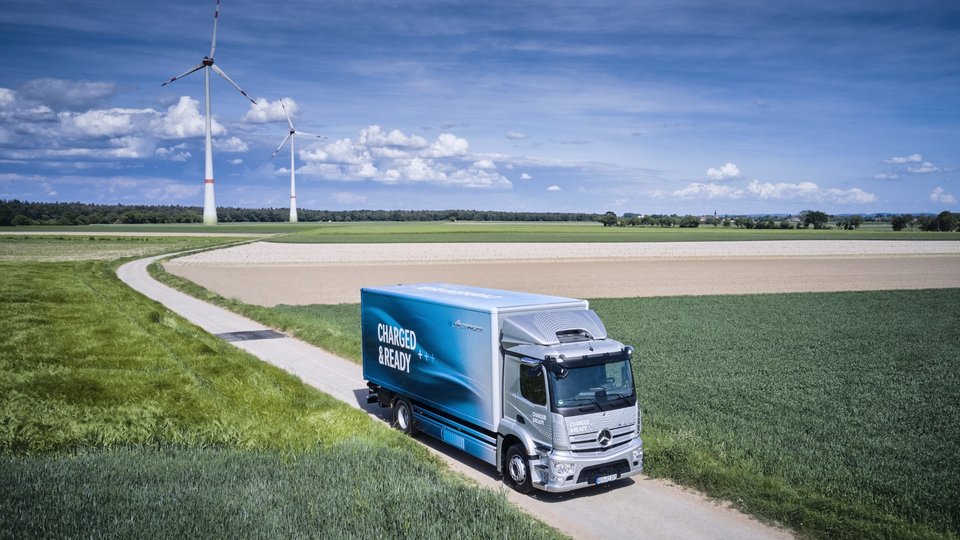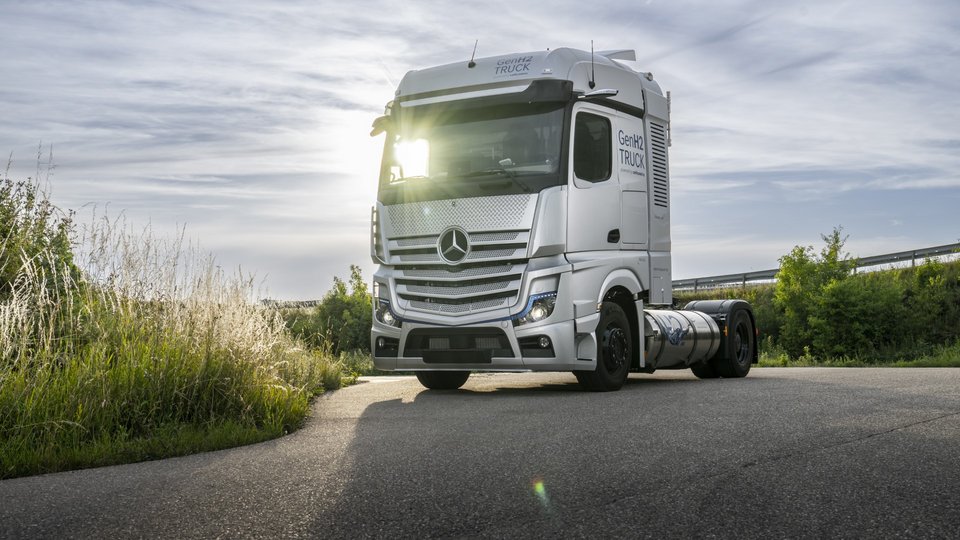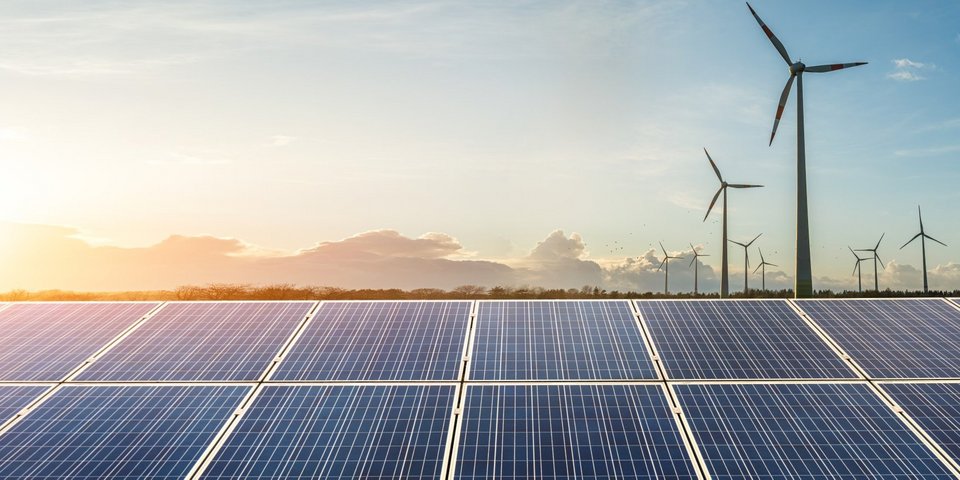Suppliers are an important part of our production network. Their commitment to climate protection and the reduction of resource consumption has a direct impact on our own carbon footprint. Therefore, we raise awareness amongst our suppliers and support them on our way to more sustainability in the supply chain. We aim to reduce the CO2-footprint of our products over their life cycle by using our supply chain as a key lever to reduce our upstream Scope-3-emissions.

Green Supply Chain
As a result of the transformation of our product portfolio towards zero-emission vehicles, emissions in the product manufacturing phase are growing in importance compared to the total emissions produced over the product life cycle.
Our ambition
We strive together with our direct suppliers for CO2-neutral products and services in Europe, the USA and Japan by 2039 – and globally by 2050.
In order to meet our responsibility of sustainable transport it is essential for us to anchor ESG in our supply chain. And it’s our strong belief: Sustainable acting suppliers are more resilient!


Our path
Our measures for a green supply chain consider suppliers as our business partners, but they also consider the purchased parts and materials as well as the transport routes to our production plants.
-
Transparency about the environmental impact of our vehicle parts supply chain
By anchoring sustainability standards in contractual terms with our direct suppliers, we can ensure binding environmental commitments. These could include environmentally friendly manufacturing, reductions in energy, water use and waste, as well as chemical and hazardous substance management. We require our global suppliers who supply us with production material to have a certified environmental management system in accordance with ISO14001, EMAS, or comparable standards.
We believe that only transparency will allow us to identify sustainability risks in the supply chain and verify compliance with our standards. That’s why we work with various tools such as the Sustainability Assessment Questionnaire ("SAQ") of the European Drive Sustainability initiative. This allows us to query all the relevant sustainability criteria and incorporate them into an assessment. The assessment is used as a mandatory criterion for new procurements when purchasing production material from a defined order volume.
In addition, last year we implemented the CDP supply chain program for the third time. Our suppliers are encouraged by the program to continuously improve their efforts at reducing CO2-emissions. In order to create transparency about their decarbonization strategies and CO2-reduction targets, we are also conducting many discussions with key suppliers. In addition, as part of our initiative work for Drive Sustainability, we also implement awareness-raising measures for our suppliers using web-based training. Among other things, environmental aspects such as energy consumption, emissions, and resource management are taught.
-
Procurement of sustainable production materials
As a first step, we used life cycle assessments to determine materials content in our products, and are therefore now familiar with the main drivers of greenhouse gas emissions in the automotive supply chain. This mainly relates to the production of raw materials such as steel, aluminum or plastics. In new product projects, purchasing works hand in hand with research & development in interdisciplinary project teams. In doing so, we analyze the key procurement volumes and make balanced decisions to effectively reduce emissions within the supply chain. We are successively evaluating other potential materials and parts to allow us to achieve CO2-reduced or -neutral supply chains. An increase in the recycling rate can also support this.
-
Inbound logistics
Our measures not only focus on the suppliers of materials and parts, but also cover the transport routes to our factories.
We are driving the transformation of the transport industry towards CO2-neutral drives and are also relying on e-trucks in our own supply chain. We have set ourselves the ambitious objective of electrifying 100 % of the delivery traffic to our largest assembly plant in Wörth by the end of 2026. A significant part of the direct supply chain can thus become CO2-neutral. Together with logistics service providers and freight forwarders who supply the Wörth plant on a daily basis, we are working on the gradual integration of electrically powered trucks into our fleets. During the course of this process, the construction of our own charging infrastructure is also planned in Wörth, which will be available to both suppliers and the company’s own vehicles. Several selected carriers will be part of the pilot phase, which is expected to be implemented this year.
The first deliveries to the Wörth plant, including those from sister plants, are already expected to be completely electrical by the end of the coming year. In the next step, the plan is to extend the procedure to the other plants in our production network.
Our Progress so far
- We require suppliers to comply with our environmental compliance standards and support them in continuously improving their environmental behavior.
- In 2022, we granted the Daimler Truck Supplier Award to those suppliers who have demonstrated outstanding performance in the area of sustainability.

Our next steps
We still have significant challenges to overcome on our journey to an emission-free green supply chain. These include our next milestones:
- We shall provide even greater transparency regarding CO2-emissions in the supply chain and shall set targeted emission reduction measures together with our suppliers. We are also expanding the existing sustainability criteria for new purchasing decisions to include climate protection criteria.
- We are gradually expanding the use of green materials in our products.

